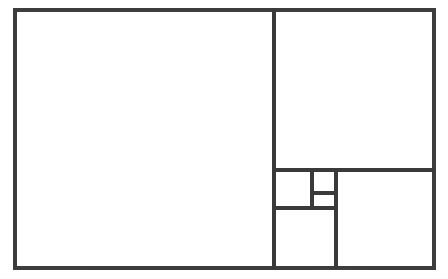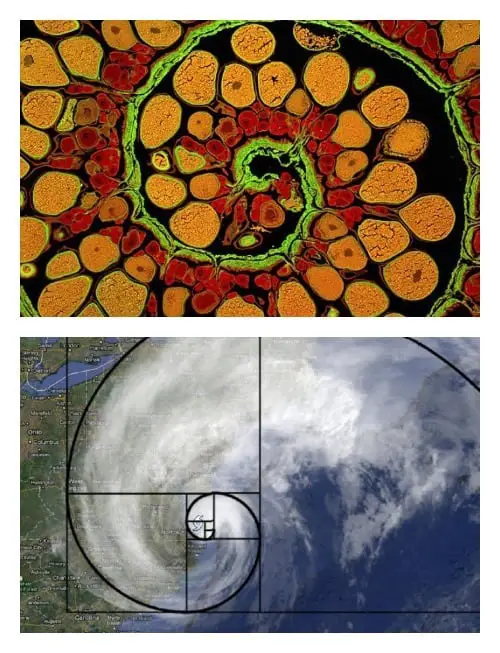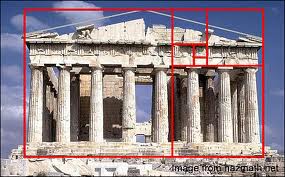Let’s blow some kids’ minds today learning about the Golden Ratio. When I first learned about the Golden Ratio in my freshman art history lecture, I knew I had made the right decision to go to art school. It was the single coolest thing I had ever learned in my life.
I’m going to summarize the concept here, in a way you could explain it to a child because that’s they only way I understand it, and you may already know about this concept but have a hard time explaining it to your kids.
The Golden ratio is basically a math term that describes a ratio, 1 to 1.618 that is commonly found in nature. Let’s look at the ratio visually:

You start with the main rectangle, which is drawn to a ratio of 1:1.618. If you draw a line inside the rectangle to form a perfect square, the remaining rectangle will have the same ratio as the main rectangle. You can keep doing this over and over forever. This would be a good math punishment for your kids.
Look at the spiral shape found within the drawing. See how the line starts at the bottom left corner, and the spiral forms by following the opposite corner of each square as it goes clockwise:

This ratio is supposedly the most pleasing to the eye- it is found in nature in flowers, plants, pinecones, fruits and vegetables, the human face and hand, etc. The two spirals below show the extent to which this occurs in nature- the top on is the ovary of an Anglerfish and the bottom one is Hurricane Irene. I found these on the Inspiration Green blog in a great post showing many more examples of this spiral in nature.
 Original images: Irene and ovary.
Original images: Irene and ovary.
Many artists have subsequently taken this idea and used it to plan their painting compositions. Leonardo DaVinci was probably the most famous artist to use the Golden Ratio in his paintings. Georges Seurat also used it. Check out the Mona Lisa, Bathers at Asnieres, and the Last Supper.
Immerse yourself in a giant post I wrote about The Golden Ratio in art right here.

The Parthenon in Greece is said to have been designed using Phi as well:

Image credits: Empty Easel
If you’d like to explore some art projects based on the golden ratio, I’ve got ya covered.
Incredible Art Department has one for the high school level.
This from Teaching Mathematics with Art – for 6-12th graders.
Here’s an idea! Print out this golden rectangle. Have your kids color it in, add lines to it, or trace over it on another sheet of paper with pencil and draw something using it’s proportions. Now THAT is mathy-arty fun.
Comments
0 comments

This is very cool. I’m going to link your post, with credit to you of course, for my Pi Day post, if that is ok with you! I love the math / art connection!
What a fascinating study! Math was never my favorite but exploring math using this golden ratio would have been an enticement for me. I would definitely use these ideas in the classroom.
Mind. Blown. Thanks!
This really helped me on my project. Thank you! I’ve been looking on loads of websites to try and find out about it but they are all just too complicated! This is a brilliantly simplified way – definitely will recommend.